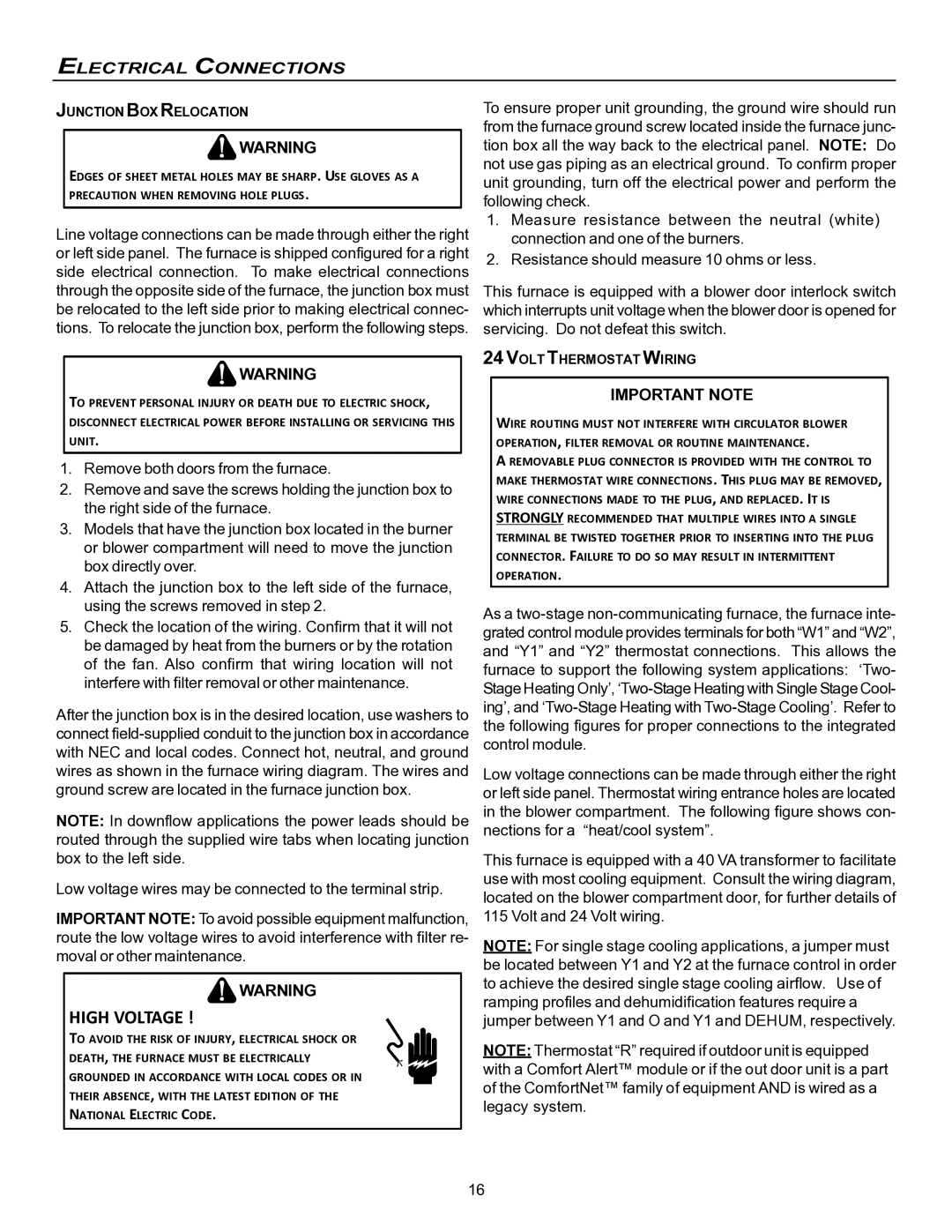VC8 specifications
Goodman Manufacturing has established itself as a leading provider of quality heating, ventilation, and air conditioning (HVAC) systems. Among its impressive lineup is the Goodman VC8, a versatile and efficient variable-capacity air conditioner that stands out due to its innovative design and advanced technologies.The Goodman VC8 is known for its superior energy efficiency, featuring a SEER (Seasonal Energy Efficiency Ratio) rating higher than 20. This means that it operates efficiently across various climatic conditions, ensuring optimal cooling with minimal energy consumption. The high SEER rating not only translates to lower energy bills but also contributes to a reduced environmental footprint, making it a smart choice for eco-conscious consumers.
One of the standout features of the VC8 is its variable-speed compressor, which allows the system to adjust its output based on the cooling needs of the space. This technology enables the unit to run at lower speeds for longer periods, maintaining a consistent temperature while reducing energy usage. The variable-speed operation also contributes to quieter operation compared to traditional air conditioning systems. Homeowners can enjoy a peaceful indoor environment without the disruptive noise commonly associated with air conditioning units.
In terms of comfort, the Goodman VC8 employs advanced humidity control features, ensuring that moisture is efficiently managed within the space. This not only enhances comfort levels but also helps to prevent issues related to excessive humidity, such as mold growth and structural damage.
The VC8 is designed for reliable performance and durability, with its robust construction and dependable components. Goodman manufactures its products with high-quality materials to withstand the rigors of daily use and various weather conditions, ensuring long-lasting operation.
Additionally, the VC8 incorporates smart technology features, including compatibility with Wi-Fi-enabled thermostats. Homeowners can easily monitor and control their system remotely, providing convenience and peace of mind.
The Goodman VC8 is an exemplary solution for those looking for an energy-efficient, advanced air conditioning system. With its variable-speed compressor, excellent humidity control, durable construction, and smart features, it promises comfort and reliability suitable for any residential space. By choosing Goodman, homeowners can invest in a quality HVAC system designed to meet modern needs and preferences.

